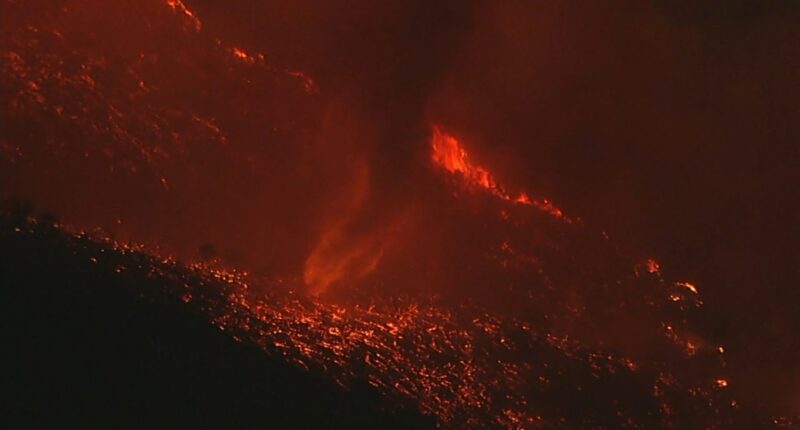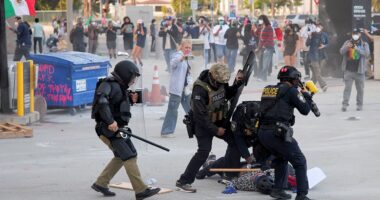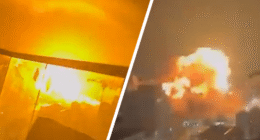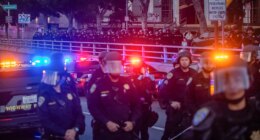California firefighters may face fire tornadoes on top of everything else they are already dealing with. Fire tornadoes are a rare but hazardous occurrence where wildfires can create their own severe weather.
The National Weather Service has issued a warning, stating that the current high winds and extremely dry conditions have led to an especially perilous situation where any new fire could rapidly grow in size. Although tornadoes were not specifically mentioned in the advisory lasting until Wednesday, meteorologist Todd Hall mentioned the possibility of such events due to the extreme weather.
A look at fire tornadoes:
What is a fire tornado?
Various terms like fire whirl, fire devil, fire tornado, or firenado are used by scientists, firefighters, and the general public to describe similar occurrences, but there is not always a consensus on the terminology. While some argue that fire whirls are solely caused by heat, others believe that fire tornadoes involve the formation of clouds due to the fire itself.
The National Wildfire Coordinating Group’s glossary of wildland fire terms doesn’t include an entry for fire tornado, but it defines a fire whirl as a “spinning vortex column of ascending hot air and gases rising from a fire and carrying aloft smoke, debris and flame,” and says large whirls “have the intensity of a small tornado.”
Family members continue to identify the residents who were killed in the Southern California wildfires as the death toll rises to 25.
Wildfires with turbulent plumes can produce clouds that in turn can produce lightning or a vortex of ash, smoke and flames, said Leila Carvalho, professor of meteorology and climatology at UC Santa Barbara.
“There is a rotation caused by very strong wind shear and a very hot, localized low-pressure system,” she said.
What is a fire tornado capable of?
Fire tornadoes can make fires stronger by sucking up air, Carvalho said. “It creates a tornado track, and wherever this goes, the destruction is like any other tornado.”
In 2018, a fire tornado the size of three football fields killed a firefighter as it exploded in what already was a vast and devastating wildfire near near Redding, about 250 miles north of San Francisco. Scientists later described an ice-capped cloud that reached 7 miles into the air and caused winds up to 143 mph.
For the first time in a week, Ken Karmin emerged from the Palisades Fire zone after he stayed behind to save his home.
Research also suggests fire tornadoes can carry airborne embers, also called firebrands, over long distances, said James Urban, an assistant professor in the Department of Fire Protection Engineering at Worcester Polytechnic Institute. They also can change the fire’s behavior, he said.
“That’s also something that is dangerous and scary for first responders, or really anyone,” he said. “It can change and maybe go in a different direction.”
The interaction between wind, the fire plume and topography determines whether a tornado will develop, he said. For example, sometimes a certain topography will restrict airflow in such a way that a spiral pattern develops.
Can you make one in a lab?
Together with San José State University, Worcester Polytech is part of a Wildfire Interdisciplinary Research Center. In the lab in Worcester, researchers have created small fire tornadoes by putting up walls around a fire or arranging a bunch of little fires that together restrict airflow. But that’s on a much smaller scale than what’s happening with the wildfires.
“We’ve got the biggest fire lab in the U.S. for a university, but we cannot get something the size of what’s been reported at these fires,” he said. “You can’t really bottle that and put it in a lab.”
Copyright © 2025 by The Associated Press. All Rights Reserved.

















